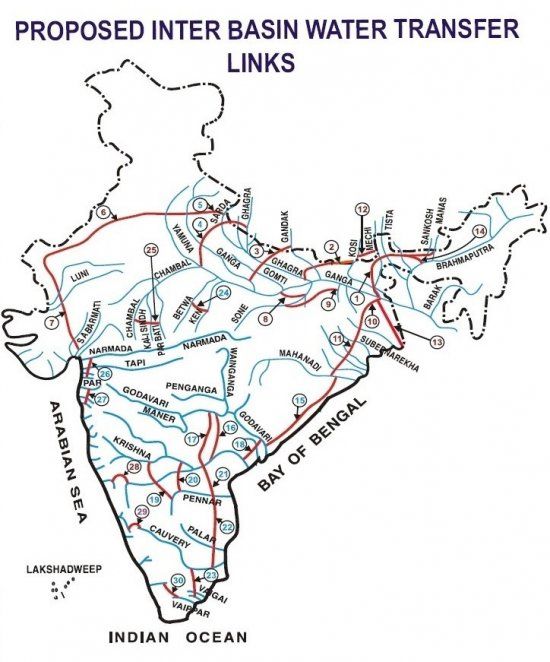National Water Grid : Just A Plan?
Apr 14, 2019 • 68 views
The national Water Grid is a large scale engineering proposal for the management of water resources in India by the interlinking rivers of through network of reservoirs and canals. The idea was given byDr. K L Raoin 1972 to the inter-linking of rivers for irrigation cum hydro project. The idea was to interlink the Perennial River to the non-perennial because perennial rivers, witness devastating floods whereas peninsular states suffer from severe droughts.
But, this idea was rejected by the Central Water Commission due to fund allocation issues and technical feasibility. In 1980, Government of India formulated the perspective plan for water resource development and set up the National Water Development Agency (NWDA) in July 1982. After long years of consideration, this idea was revived again in 2003 when Dr. APJ Abdul Kalam mentioned it in one of his speech but the process of interlinking is very slow till date.
The National River Interlinking Project will comprise of 30 links to connect 37 rivers across the nation through a network of nearly 3000 storage dams to form a gigantic South Asian Water Grid. It includes two components:
Himalayan Component:Under this components, 14 projects have been listed to link various Himalayan rivers such as Ghaghara–Yamuna link, Sarda–Yamuna link, Yamuna–Rajasthan link, Rajasthan–Sabarmati link; Kosi–Ghaghara link, Kosi–Mechi link, etc.
Peninsular Component:Under this component, 16 projects have been listed to link various peninsular rivers such as Interlinking of Mahanadi-Godavari-Krishna-Palar-Pennar-Kaveri, Interlinking of West Flowing Rivers, North of Mumbai and South of Tapi, Inter-linking of Ken with Chambal and Diversion of some water from West Flowing Rivers.

Advantages of the National Water Grid Project -
Redistribution of water:This project controls the water distribution through the linking of different river which will not only control the flood like situation in the perennial but also to the drought like situation in non-perennial river areas.
Hydropower generation:If rivers in India are interlinked then there will be a majority of dams and reservoirs which claims to generatetotal power of 34,000 MW(34 GW). Therefore, we can say interlinking of the river has potential to fulfil the energy requirement of the industrial, agricultural as well as rural households.
Irrigation Facilities:India is a land of agriculture, but its dependency on the monsoon becomes a barrier to the agricultural growth. Interlinking of rivers will allow better source for irrigation activities.
Commercial facilities:Interlinking of the river will open the gate for new perspectives of the inland waterways. It will help in faster mobilisation goods from one place to another. It will also open the new perspective of the fish farming.
Although, this project has many advantages and will thrive lives of many but some environmentalist believe that it will cause ecological and social impact. Like, interlinking of the river will affects the ecosystem of the rivers. Also, if rivers will inter-linked then there will dams and reservoirs which causes the large number of displacement of the people. Therefore, rehabilitation will be major issues.
The Government has formulated such a huge project while ignoring the alternatives such as decentralised watershed development, rainwater harvesting, groundwater recharge,reviving the existing local sytems of water harvesting and irrigation.But if it becomes successful in complete all the links along with considering all the alternatives, then there surely arise some changes for betterment of society and nation's biodiversity.
